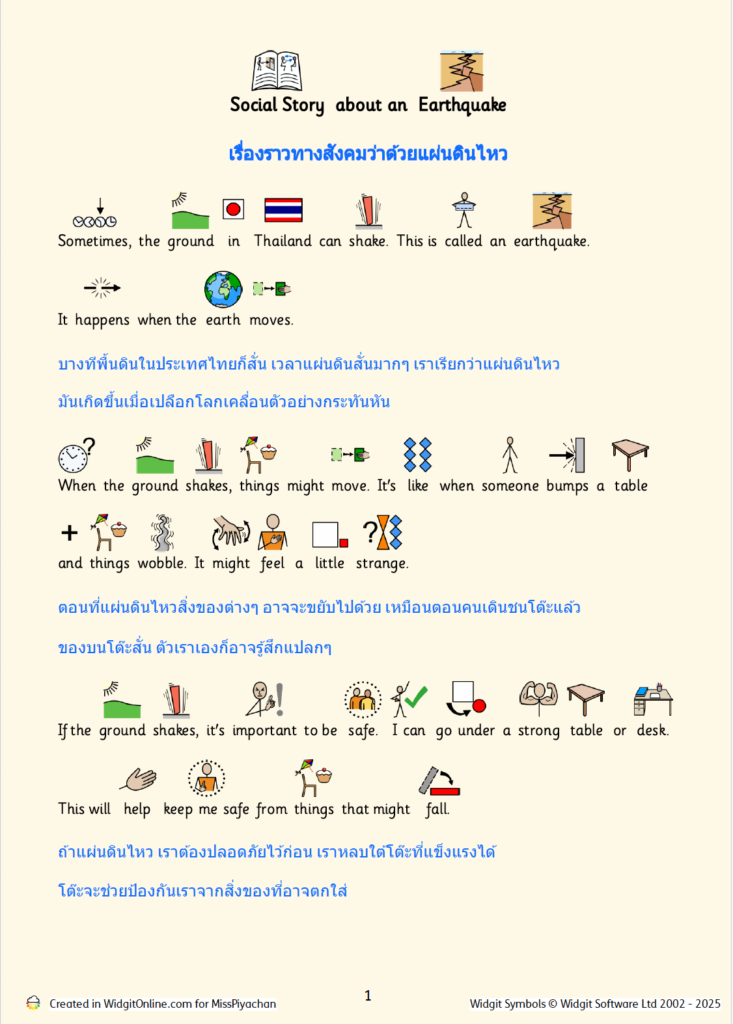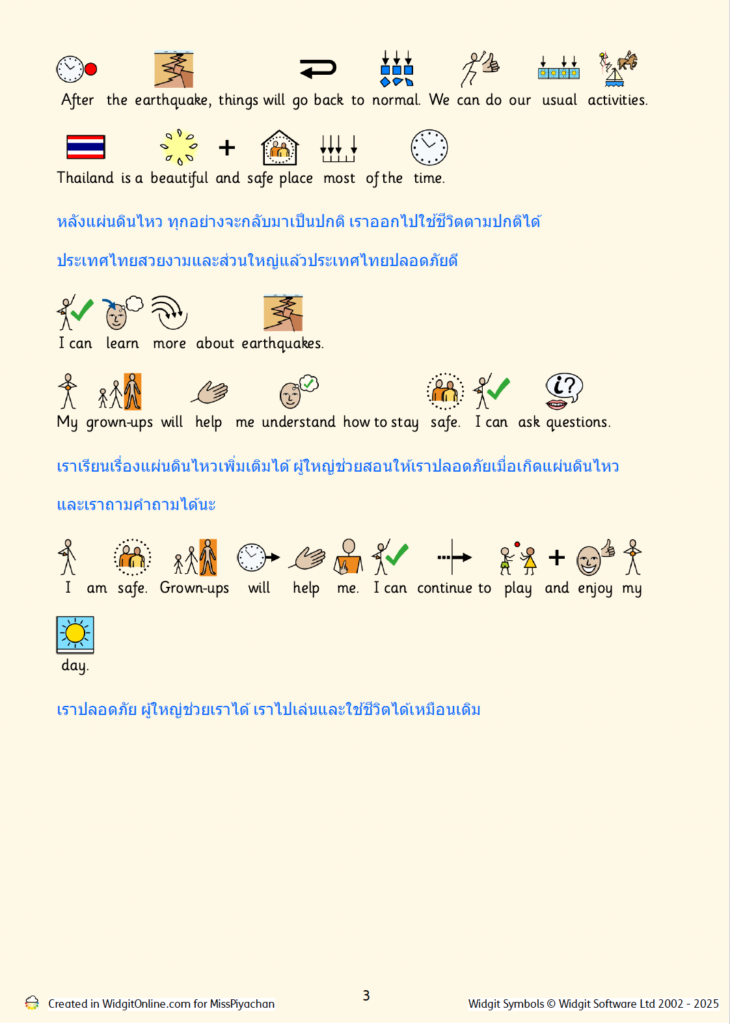Social Story, invented by Carol Gray, is a tool widely used in the UK and elsewhere to help children, especially those with autism spectrum conditions, better understand and cope with various social situations. The need for such tools can feel particularly relevant when real-world events occur. For instance, last week, on March 28th, 2025, a devastating magnitude 7.7 earthquake struck central Myanmar, and tremors were felt as far away as Bangkok, Thailand. While parts of Thailand occasionally experience tremors, feeling such strong shaking was a new and unsettling experience for many, leaving both adults and children unsure how best to keep themselves safe. Feeling such unexpected shaking can understandably cause anxiety, especially for children. This makes resources like Social Stories, which explain what is happening and how to stay safe, incredibly valuable.
Typically, a Social Story is written for a specific individual and situation. However, nowadays, we can also use Social Stories to explain significant world events that directly affect children, such as using them to explain COVID-19 a few years ago, or indeed, seismic events like earthquakes. Social Stories can be used both to prepare children for future events and to explain events or social situations that have already occurred.
When writing a Social Story, we use simple, clear, and straightforward language, and may include illustrations to aid understanding. In this instance, I use symbols from Widgit Online.
Social Stories are written positively, focusing on what we can do rather than what we shouldn’t do. The example story provided below also needs to be adapted to suit the child or individual it will be read to.
A Social Story like this helps to:
- Reduce anxiety by providing information about the situation, allowing children to predict what might happen (e.g., what an earthquake tremor feels like, why it happens, and that it usually stops).
- Teach safety skills by suggesting appropriate actions for the situation. In this case, it explains how to stay safe during an earthquake (e.g., ‘Drop, Cover, Hold On’).
- Build an understanding of complex social situations that might follow an event, such as why there might be many adults in uniforms around.
- And more, depending on the desired change or understanding the story aims to achieve when written.
The example story I have written here is quite long because it was created with a specific child in mind, written at his level of understanding and as he primarily uses symbols. If I were writing for younger children, I would make it much shorter – perhaps just a few sentences – and use real photos, items, or even do role-playing with them.
I would read the story together until the child understands and feels less worried. I love using Social Stories as they are highly adaptive tools that can be used in almost any situation. Download the full story here: Earthquake Social Story: the Example. If you think content like this is useful please don’t hesitate to buy me a coffee. 😀


